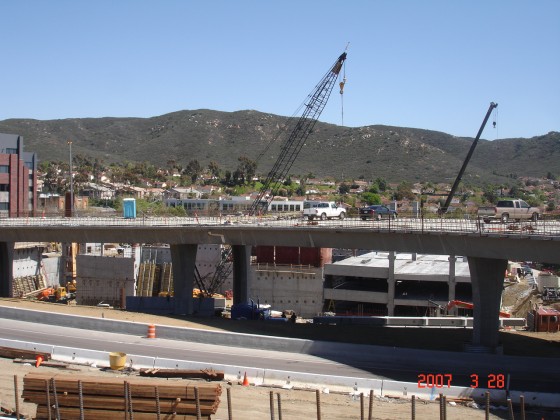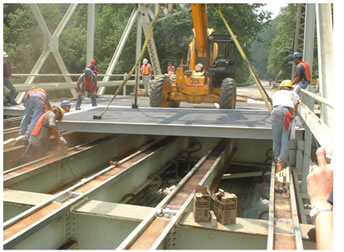Photo courtesy of the California Department of Transportation
A trend in bridge replacement is in full swing in the Hudson Valley, New York. The second bridge, being installed on eastbound Interstate 84, will be completed over the course of just a few days. This keeps motorists happy, lowers the auto accident rate and creates a safer environment for bridge workers.
It will only take about a day to slide a pre-constructed bridge into place. This is an amazing feat, especially considering that a bridge that was recently replaced where I live required the town’s main road to be closed for about two years. Traffic had to be rerouted onto several convoluted routes.
Early Saturday morning a portion of I-84 will be closed and it will take crews about 18 hours to remove the old bridge and simply slip the new one into place. That portion of the highway will be closed for five days.
The first bridge replacement, for westbound traffic, took place in September. the process, called “accelerated bridge construction” (ABC), has been used internationally and in a number of U.S. states to minimize the length of time a highway is out of commission and to lower the risk of injury to workers.
A project like this is the ultimate in planning. ABC has been promoted by the Federal Highway Administration (FHWA), which issued a report with the California Department of Transportation (Caltrans) and several other entities.
According to the report, there are many advantages to ABC:
“Proven benefits include minimized traffic disruption, improved work zone safety, and reduced on-site environmental impacts. Related traffic impacts derive from both expedited congestion relief projects and minimized traffic disruption due to reduced on-site highway construction activities. Safety enhancements benefiting the motoring public and highway workers, as well as lessened environmental impacts are directly attributable to limiting in-situation work requirements. For these reasons, European and Asian countries have already embraced the ABC philosophy for many of their urban construction projects.”
The FHWA explains that structural components of a bridge—prefabricated bridge elements and systems (PBES)—are built offsite, or near the site of the bridge to be replaced. The components include features that drastically reduce the length of time for onsite construction for new bridges or rehabilitated or replacement bridges. The components are built away from traffic areas, transported to the site and quickly installed.
Photo courtesy of the Federal Highway Administration


